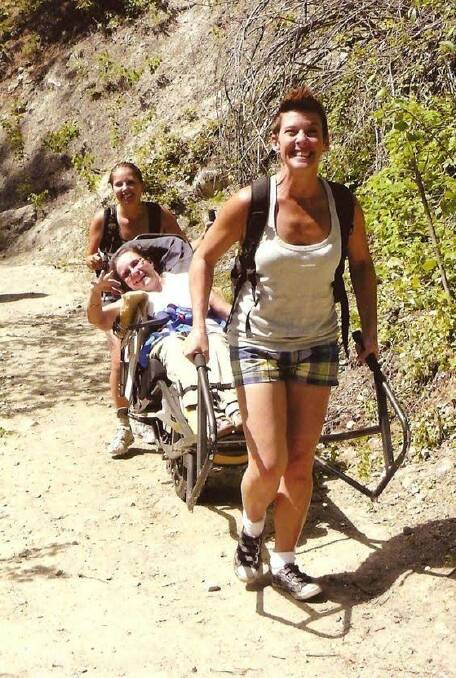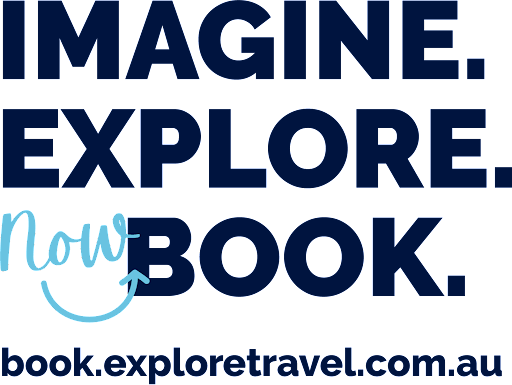Yasmine Gray has lost track of the number of times she’s contacted a venue in advance and been told it’s accessible, only to arrive and find there’s a single step up to the entrance. For the Canberran, who’s in a wheelchair and often on her own, “it might as well be a mountain”.
If you have a disability, accessibility issues are often hard enough to deal with just in your own neighbourhood – and a recent survey found 75 per cent of respondents have skipped social functions with family and friends because of a fear they would be inaccessible. But just imagine how much more complicated it is when you’re travelling.
There was one time when Yasmine flew to London, arrived at her hotel late in the evening, and discovered the room she’d booked didn’t have the necessary facilities she’d been promised. It’s not what you would want to deal with after flying for 24 hours, but at least the staff helped her find alternative accommodation that had just what she needed.
“I’ve been to London twice since then and I’ve gone straight back to the hotel they helped us find, without an issue, because it was great,” Yasmine says.
It’s examples like this that the travel industry needs to take note of. About 20 per cent of Australians have some form of disability and the number’s likely to increase as the population ages. Catering to these people is not just a matter of good customer service for tourism operators, it also makes financial sense when you consider the accessible tourism market is worth 10 billion dollars in Australia (about the same as the inbound Chinese market), according to market research company My Travel Research.
It’s one of the reasons that Yasmine has organised the Accessible & Inclusive Tourism Conference In Asia Pacific (AITCAP), a virtual conference that began this week and will continue for the next three Thursdays in May. With more than 40 speakers, it will look at the problems in the tourism industry and explore ways to improve the travel experience and create opportunities for tourists and businesses.
There are some great examples already in Australia, like art galleries that have audio guides for the vision-impaired so they can still enjoy the masterpieces, special wheelchairs designed for beaches, hotel rooms where lights and curtains can be controlled by your voice, and TrailRiders to carry people on hikes in national parks (“I describe it as a wheelbarrow for people,” Yasmine jokes.)
While these innovations show great progress, they are still the exception, rather than the rule. And, looking globally, the Asia Pacific is lagging behind the rest of the world. Although Australia has better regulations than many other countries, Yasmine thinks we’re also risk-adverse and many tourism companies aren’t able to think outside the box.

“I’ve travelled all over the Middle East, which I assure you is the most inaccessible in terms of infrastructure, but there’s such a can-do attitude and people just make it work,” she says. “A couple of things I’ve done would be against every OH&S rule in Australia, but I could do it!”
I think back to some of the things I’ve done on my travels and wonder how people with particular disabilities could have done them. Although there are lots of potential improvements that would open up new opportunities, the reality is that there’s still a limit to how accessible every travel experience can be. Yasmine says there’s an expression for just these moments: ‘When is acceptable just as good as accessible?’.
“If I really want to do an experience, I’d be willing to go through a bit of hardship to do it,” Yasmine says. “Some things are just really really hard and it might not be the most comfortable thing, but you do it because it’s an experience you wouldn’t have otherwise.”
One of the main messages at the AITCAP conference – and one of the points Yasmine makes to me a few times when we chat – is that ultimately communication is the most important thing. That includes having information about accessibility in a prominent spot on websites, giving correct information when asked (just one step still makes an entrance non-level), and training staff to be able to help at venues.
But beyond the issue of communication, Yasmine hopes the tourism industry will one day get to where the restaurant industry now is. There was a time when people with allergies or other dietary concerns simply got variations of the main menu – an ingredient taken away, for example. But now there are special meals that are vegan, gluten-free, and dairy-free. Perhaps travel operators can do the same, where people with disabilities don’t just get a substandard modification of the main product, but actually get interesting and innovative experiences designed just for them. And maybe, just maybe, Australia could aim to be a world leader in accessible tourism.
You can find out more information about the AITCAP conference at the getaboutable website. Michael Turtle has more information about travelling in Australia at Travel Australia Today.




